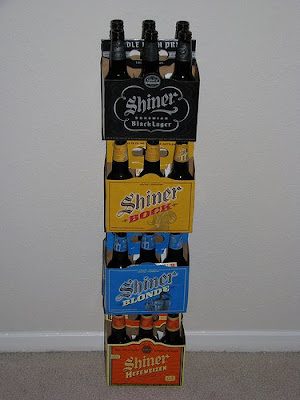As the saying goes, I wasn't born in Texas, but I ran here as fast as I could. When I arrived, I found that the Lone Star State produces some fine beer, specifically, Shiner beer...
.jpg)
While I could go on all day about the merits of Shiner Hefeweizen compared to the original Shiner Bock, that's not really the point of the above photo. What I want to discuss is how folks on large-scale construction jobs view the relationships between the prime contractors, secondary contractors, sub-contractors, and so on.
Typical Construction Industry Approach
In case you haven't figured it out yet, the construction industry typically views sub-contractor relations like the above photo...with each contractor dominating the one below it and being subservient to the one above it. An old-school rigid, vertical hierarchy. This is based on standard construction practice, which typically involves a contractor doling out aspects of the work to sub-contractors. In this arrangement, the contractor is viewed as the customer and the sub-contractor is viewed as the provider of the product or service. This is an external customer relationship, and it's repeated over and over again at each level of the hierarchy, so you can have dozens of external customer relationships on a job site. How fun! A bunch of people showing "respect" for their boss man above them. Old school mentality.
The Lean Approach
From a Lean perspective, I would say a collaborative model would be more effective than a rigid vertical hierarchy. If you've read
Gemba Kaizen, then you know about the inverted pyramid that places management below the gemba (the place where the real work is done) in a support role. Essentially, the gemba is viewed as the internal customer of management, and I would say that prime contractors should view their sub-contractors as their internal customers. They should support them, not threaten them with punitive actions. They should identify and solve problems, not pass the buck just because the contract says they can.
Your thoughts? I'd be interested in learning if other traditional industries are as "old-school" in their relationships with vendors/suppliers. How would you rank your industry's level of collaboration on a scale of 1 to 10, with 1 being a rigid, vertical arrangement and 10 being a progressive, Gemba Kaizen-like approach?
All I know is that until the construction industry embraces Lean thinking and begins working more collaboratively, we'll be doomed to mindless obedience and endless frustration. Thank goodness we have beer.

.jpg)
.jpg)



